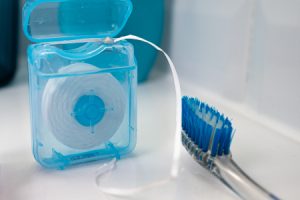 Flossing is an integral part of a healthy oral hygiene routine. It helps remove plaque and food particles between the teeth and the gumline, areas a toothbrush cannot reach. However, many people struggle with effective flossing, either because they find it difficult or because they are unsure of the proper technique.
Flossing is an integral part of a healthy oral hygiene routine. It helps remove plaque and food particles between the teeth and the gumline, areas a toothbrush cannot reach. However, many people struggle with effective flossing, either because they find it difficult or because they are unsure of the proper technique.
Here are some tips for effective flossing:
- Use about 18 inches of floss: This allows you to use a clean section for each tooth and reduces the risk of spreading bacteria from one tooth to another.
- Hold the floss taut: This helps the floss reach the contours of your teeth and clean effectively.
- Gently glide the floss between your teeth: Use a back-and-forth motion to slide the floss between your teeth gently. Be careful not to snap the floss, as this can cause gum irritation.
- Clean along the gumline: Once the floss is between your teeth, use a back-and-forth motion to clean along the gumline. Be gentle, as the gums are sensitive.
- Don’t forget your last molar: It’s easy to forget the back of your last molar, but it’s important to floss this area as well. You can use the floss like a little shovel to scoop out plaque and food particles.
- Rinse with water: After flossing, rinse your mouth to remove any remaining particles.
- Floss at least once a day: It’s important to floss at least once a day, ideally at night before bed. Flossing helps remove plaque and food particles that have accumulated during the day.
It may take some time to get used to, but it’s worth it for the health benefits. If you struggle with flossing, consider using floss picks or an interdental cleaner, such as a water flosser or wooden plaque remover. These tools can make flossing more straightforward and more effective.
Don’t neglect the importance of floss in your oral hygiene routine. It may take a little extra time, but flossing can help prevent gum disease, tooth decay, and bad breath. Make it a habit, and you’ll be on your way to a healthier mouth.
